A herbal garden is a great way to grow some beautiful and helpful plants that can be easily used to provide for many wellbeing needs.
All the plants that I am suggesting here are great for their taste, and are therefore very good for cooking, but they have many other properties that make them very helpful to help with your general well being too.
If you have a garden, or even only a windowsill, you probably have a few of them already, and are using them to add savour to your dishes, but you might not know all the benefits or the uses of these helpful lots, so let’s just dive in and find out more!
First thing first: how and when to plant an herbal garden
As said above, if you are worried because you do not have a proper garden, fret not my dear, because these plants can be managed in small pots as well, do not require much care, and you can give a go to your herbal garden even inside.
All of the plants, with the exception of basil which you can anyway find easily all year long, are evergreen, so you do not have to wait for the right season to plant them, and just start whenever you want.
When you buy them, I suggest you buy as well some bigger pots to transplant them right away, so that they can settle down and have already space to grow their roots, while they get acquainted to the spot you are going to place them in. A sunny spot is ideal for all of them, and watering them once per week will be enough to grant them all the care they need. Just one thing: when is really hot, or if they are near a heater, you might want to check the soil and maybe water them a couple of times per week, if you find it too dry. As a general rule the soil should look a bit moist and soft.
My herbal garden superstars: the fabulous five
Basil
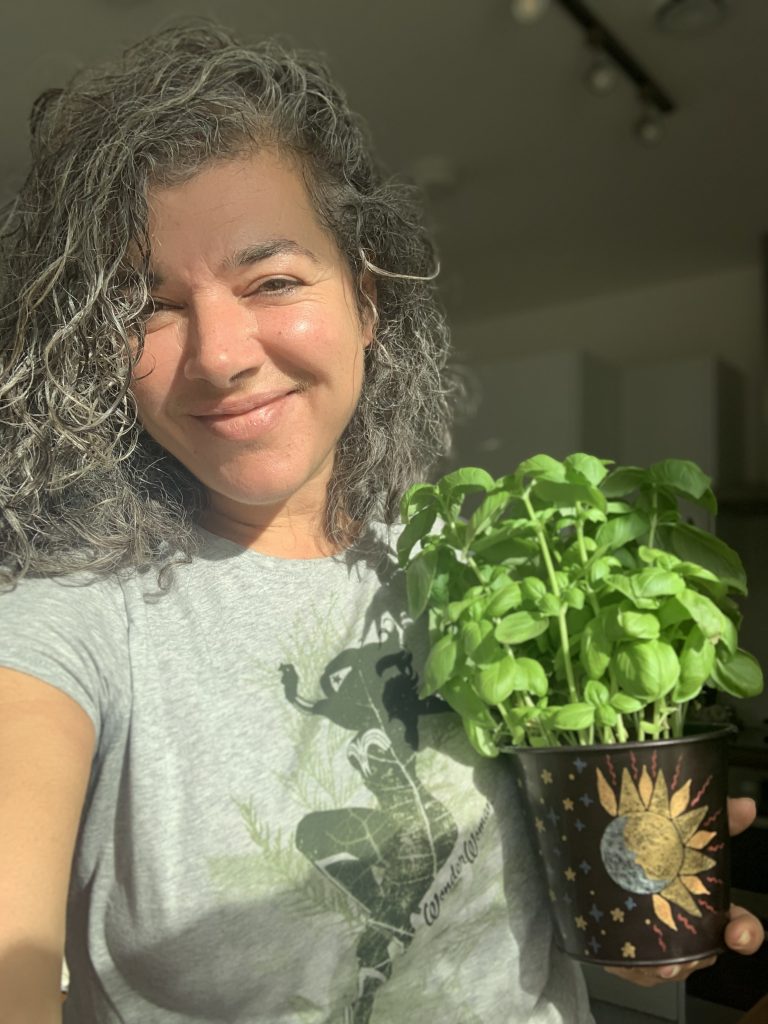
Basil is possibly the best known of these plants, and can be found easily at your grocery shop for as little as £1. Is an annual plant, it grows in summer, so if you want to have it all year long, you have to keep it inside during the colder months.
Is one of the most used herbs in the Mediterranean cuisine and is a perfect addition to your tomatoes’ salad, but this is really just a start!
Basil is the crucial ingredient for pesto, the glorious sauce from Genoa, for a delicious ratatouille, and is a great addition to any recipe with aubergines, to caprese salad, tomatoes bruschetta, to top up your margherita pizza, and many more.
Benefits:
Basil (Ocimum basilicum) contains many vitamins and minerals, as well as antioxidants such as lutein, zeaxanthin, beta-carotene, and beta-cryptoxanthin. Many of basil’s health benefits come from these antioxidants, as well as its essential oils. These compounds mostly disappear during the drying process, so having the fresh plant ready to use will grant you to gain the most benefits. It is great for gastro intestinal diseases, so using it to create an infusion is very helpful to improve digestion. The infusion is best consumed after eating, and it will help particularly when the indigestion has a nervous origin.
Basil has anti-inflammatory properties, and its essential oil has an antiseptic and expectorating action, really helpful to maintain our bronchi healthy.
Sage
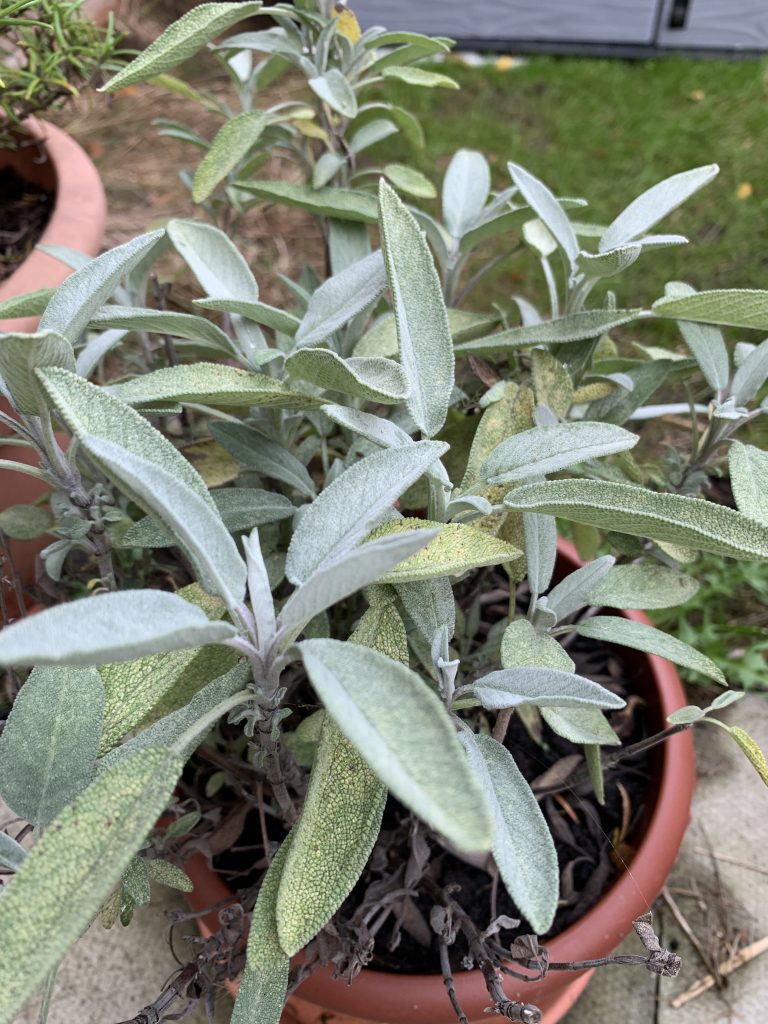
Sage is another superstar precious for its medical properties, although is mostly known for its culinary uses only. Is an evergreen plant, so it grows all year long, and it flowers in spring.
In the kitchen is a lovely addition to soups with beans or chickpeas and to meat dishes, usually mixed with other herbs as well (perfect with rosemary to create a marinade for the meat before cooking it), and the leaves of the giant sage are even prepared fried, to savour their fragrance on its own!
Benefits:
Salvia Officinalis is a precious ally for period pain for its anti-spasmodic action, it helps fighting cramps, and it’s great to make your period more regular. It is rich in anti-oxidants too, and that’s why sage is used to preserve foods as well. The infusion of sage leaves is a great tonic that helps fighting fatigue both on a physical and mental level. It helps with digestion too.
The infusion it’s quite powerful and is best to avoid it during pregnancy and nursing, as they can interfere with the milk production!!! (You can still use it for cooking, is the concentration reached with the infusion that you want to avoid!)
Sage has a powerful purifying effect, and can be used to create smudge sticks to clear and purify any ambient (and yourself!): just create the smudge stick tying together a bunch on dried sage leaves, and burn them at your convenience!
Rosemary
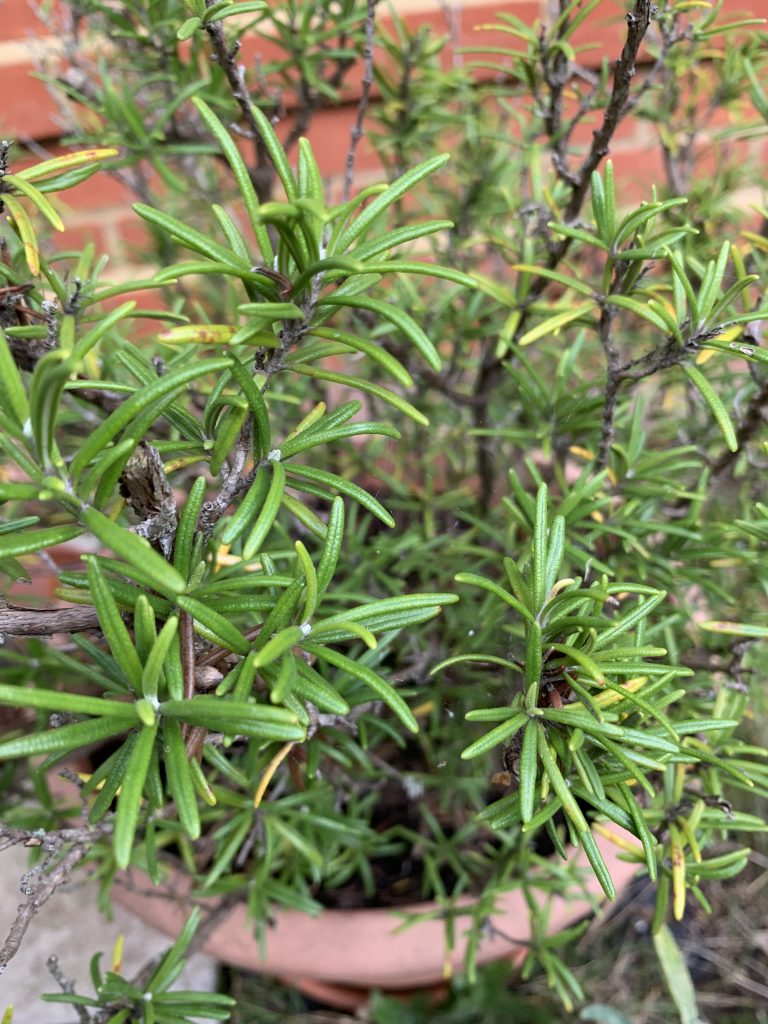
It is another evergreen plant that is mostly used in the kitchen for its incredible aroma that adds a distinctive and rich flavour to your dishes.
Rosemary is perfect with soups ad meats, particularly with chicken, and is a great addition to bread and focaccia, to which will add a mouth-watering note: just add some olive oil, and lunch is served!
Benefits:
Rosmarinus Officinalis has a multitude of health benefits, the flowering tops are used to prepare an infusion that is incredibly helpful to drain and detox our organism, and it has a positive action on our digestive system. It is good for stomach ache as well, and you might be surprised at how good the infusion tastes! You definitely need to try it, as it has virtually no contraindication (but just test how you react to it, as you should do when trying any new substance for the first time!).
It is rich in antioxidants too, and has a good action on our respiratory system too, perfect to use I boiling water for a steaming tent, even mixed with other balsamic plants.
Rosemary is greatly used in cosmesis as well: it was the main ingredient of Queen of Hungary Water, an infused water known for its beautifying and stimulating properties. Perfect to use it in massages to soothe the muscles ( that’s why Weleda adds it to its marvellous arnica oil) and it has a powerful stimulating action for the scalp (Again … Check Weleda Rosemary Hair tonic if you want a ready to use potion for your hair!)
Mint
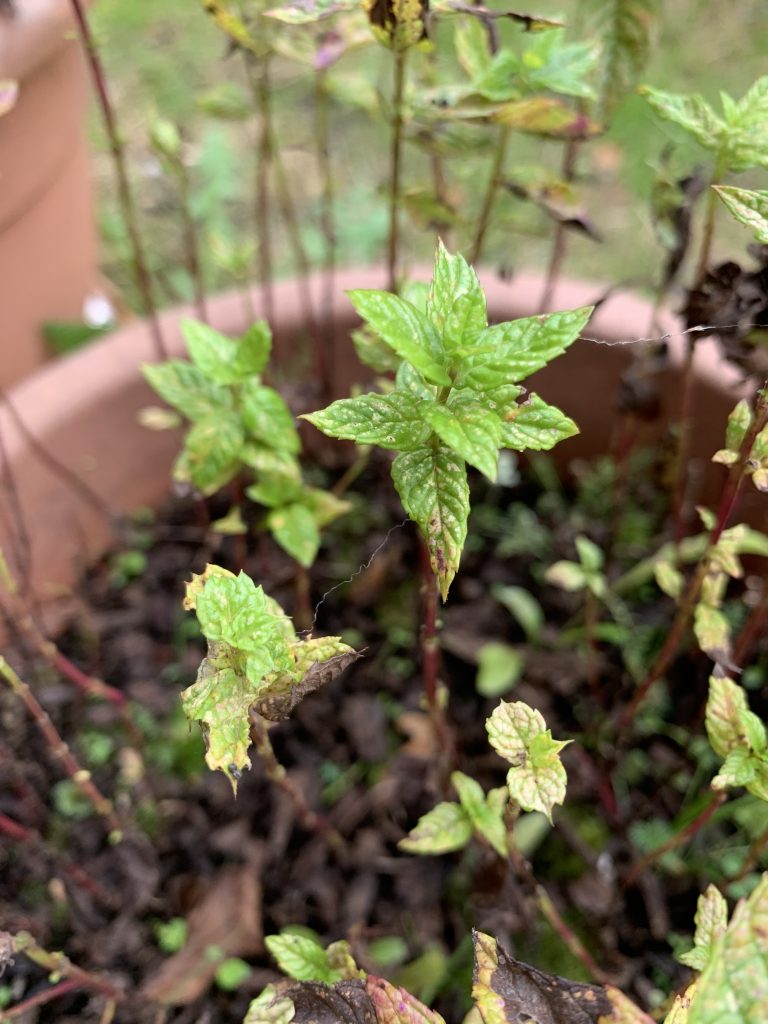
Mint is a perennial plant that shades its leaves in autumn, to grow again from the soil in spring. it does not die out even if it appears so, on the contrary it propagates quite quickly, so pay attention if you plant it in the open ground, as it may take over in a short spell of time!
This is maybe the best-known plant for its health benefit, as it is widely used for digestive infusions and its balsamic properties. Helpful to clear the mind and help with focus, mint should be present in every home for it is so easy to use, and its benefits are so quick and reliable! In the kitchen, starting with the preparation of delicious mojitos, is great to be added to fruit salads, to green tea for a refreshing Moroccan drink, and is the base for the green sauce used to accompany meats, and is an exotic addition to fresh salads, try it with the Lebanese Fattoush salad (Here you can find the whole recipe), and you won’t do without anymore!
Benefits:
As already said Mentha Piperita is largely used for any problem of the digestive system, helps digestion, contributing to the reduction of the painful part of indigestion, and is a great stimulant of the nervous system.
Is helpful to fight nausea during pregnancy. Its anti-inflammatory properties are of good use for any respiratory disease, and has antiseptic properties that makes the go to remedy for any cold/flu related disease. Good for a steaming tent to free the nose and help in case of sinusitis. For external use it has a refreshing and relaxing effect on muscles.
Pay attention as mint infusion is contraindicated in stomach ulcer or gastro intestinal reflux, as it can enhance the gastric secretion, causing a worsening of the symptoms. (Again, test it just in case, I suffer from reflux, and to me it is of great help instead, so establishing individual tolerance is always the most important thing!)
Lavender
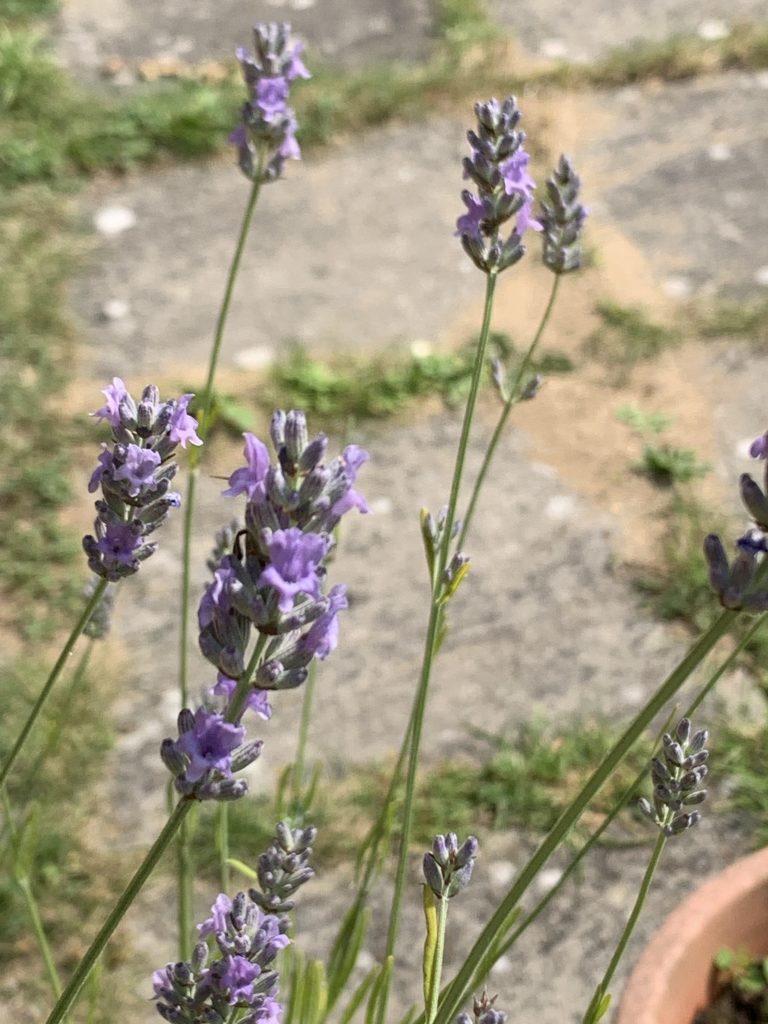
This is probably my favourite plant, although I love them all, but it surely is the one that fascinated me the most since I was a teenager, and it was the first one I studied and that I planted in my garden. Might be for its lovely scent, mainly used in cosmesis, and its beautiful flowers, that in summer get alive with buzzing activities, it is one of the best plants to help pollinators, and the honey obtained from its flower is one of the most therapeutic ones! It is an evergreen plant that flowers in early summer.
Maybe not widely used in the kitchen, given its bitter taste, the flowers can be used to create aromatic biscuits and cookies, and can be added to apple compotes for a bitter kick, is surely mainly used as infusion for its balsamic and depurative properties.
Benefits:
Thanks to its powerful essential oil, lavender is used to alleviate migraine, to help you sleep, to relax the body and the mind. The balsamic properties together with the digestive ones make for a perfect infusion, better mixed with similar herbs to mitigate the bitter flavour.
For external use its balsamic properties are helpful against respiratory disease and in case of asthma, but please be careful as in my personal experience you never know: my husband who suffer from asthma, gets an immediate attach as soon as it smells lavender, so again, test your tolerance!)
Great for its purifying and antiseptic properties on the skin, the incense is great for the purifying action as well, and can really help you sleep and induce calm and serenity, as will a few drops of lavender essential oil on your pillow! Check this article on the uses of the essential oil for first aid kit.
Of course this is just a selection of the most helpful and common plants, I hope you enjoyed this excursion on their properties and uses. Did you know all of these already? Do you use them differently in the kitchen? Let me know in the comments section below!
Credits: Title Image by Jill Wellington from Pixabay
Bibliography : Enrica Campanini “Phytotherapy and medicinal plants dictionary ” Tecniche Nuove Editor, 2012